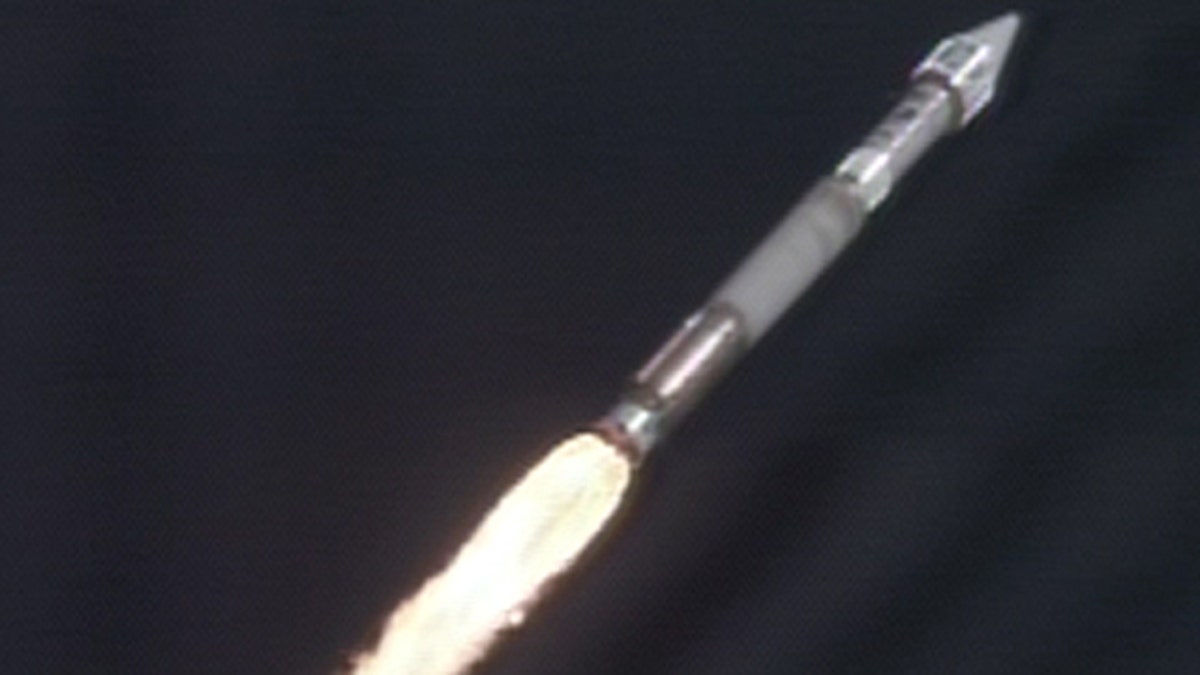
The Atlas V rocket carrying the Solar Dynamics Observatory speeds into space shortly after launch Thursday morning from Cape Canaveral Air Force Station in Florida. (NASA TV)
A new NASA spacecraft aimed at studying the inner workings of our sun blasted off Thursday to begin a five-year mission to better understand the mysteries of Earth's star.
The Solar Dynamics Observatory (SDO) lifted off atop an Atlas 5 rocket at 10:23 a.m. EST from Launch Complex 41 at Cape Canaveral Air Force Station in Florida. A first launch attempt on Wednesday was stymied by strong winds.
The $850 million mission will take the most detailed, comprehensive measurements yet of our closest star — with 10 times better resolution than HD television — using three state-of-the-art instruments onboard.
"To the naked eye, the sun appears as a constant pale yellow ball," said SDO project scientist Madhulika Guhathakurta of NASA Headquarters in Washington, D.C., during a Tuesday briefing. But actually the sun is a volatile and unpredictable body, full of turmoil that scientists still don't understand, she said.
"SDO is designed to probe solar variability," Guhathakurta said. "It will revolutionize our view of the sun."
The discoveries made by the probe will help develop better ways of forecasting solar weather, inlcuding the violent flares of charged particles that sometimes erupt from the sun and can disrupt satellites and power grids on Earth.
"Our sun affects our lives more and more as we depend more and more on technology," said SDO project scientist Dean Pesnell at NASA's Goddard Space Flight Center in Greenbelt, Md. "We would like to predict this magnetic field, to predict what's going to happen in solar activity and to say a solar flare is coming."
One such flare, a March 1989 solar storm, knocked out the power supply in Quebec and disrupted power and communications across North America.
"The goal of an experiment like [this] is not just to take the data but to develop a real physical understanding of what goes on so we can make more sophisticated predictions," said Alan Title of the Lockheed Martin Solar and Astrophysics Laboratory, principal investigator of SDO's Atmospheric Imaging Assembly instrument.
The scientists are also intent on sharing SDO's wealth of data beyond the scientific world. They will pipe their data to a free downloadable iPhone application — 3D sun — that displays a constant stream of updated 3D views of the sun from SDO and other solar probes.
"This is way cool," Guhathakurta said, demonstrating the app.
The spacecraft will undergo about two months of calibration and testing before it begins taking real science observations.
"We can't wait to get this data started," said SDO project manager Elizabeth Citrin, also at NASA's Goddard Space Flight Center.
The liftoff was the second this week for NASA, which launched the space shuttle Endeavour on a 13-day trip to the International Space Station Monday.
